.JPG) |
Many cave and karst features are now protected by national parks or state parks and reserves. (Image : Chuck Perkins) |
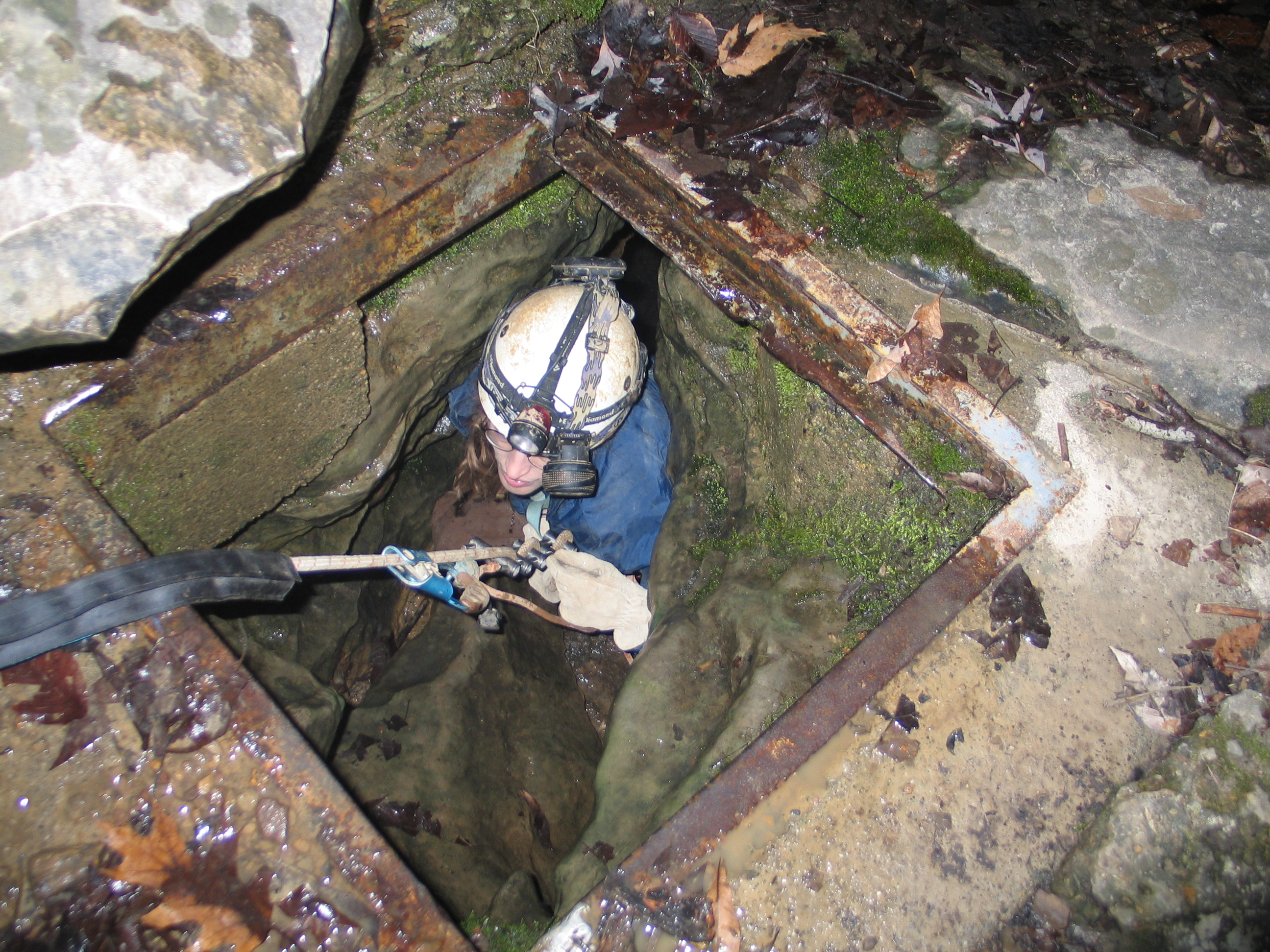 |
Caver Molly Wright descends through the once gated entrance of an Indiana cave. These gates are put in place to protect fragile cave
formations and cave animals from being disturbed by careless visitors. This gate had been vandalized and stolen. (Image : Chuck Perkins) |
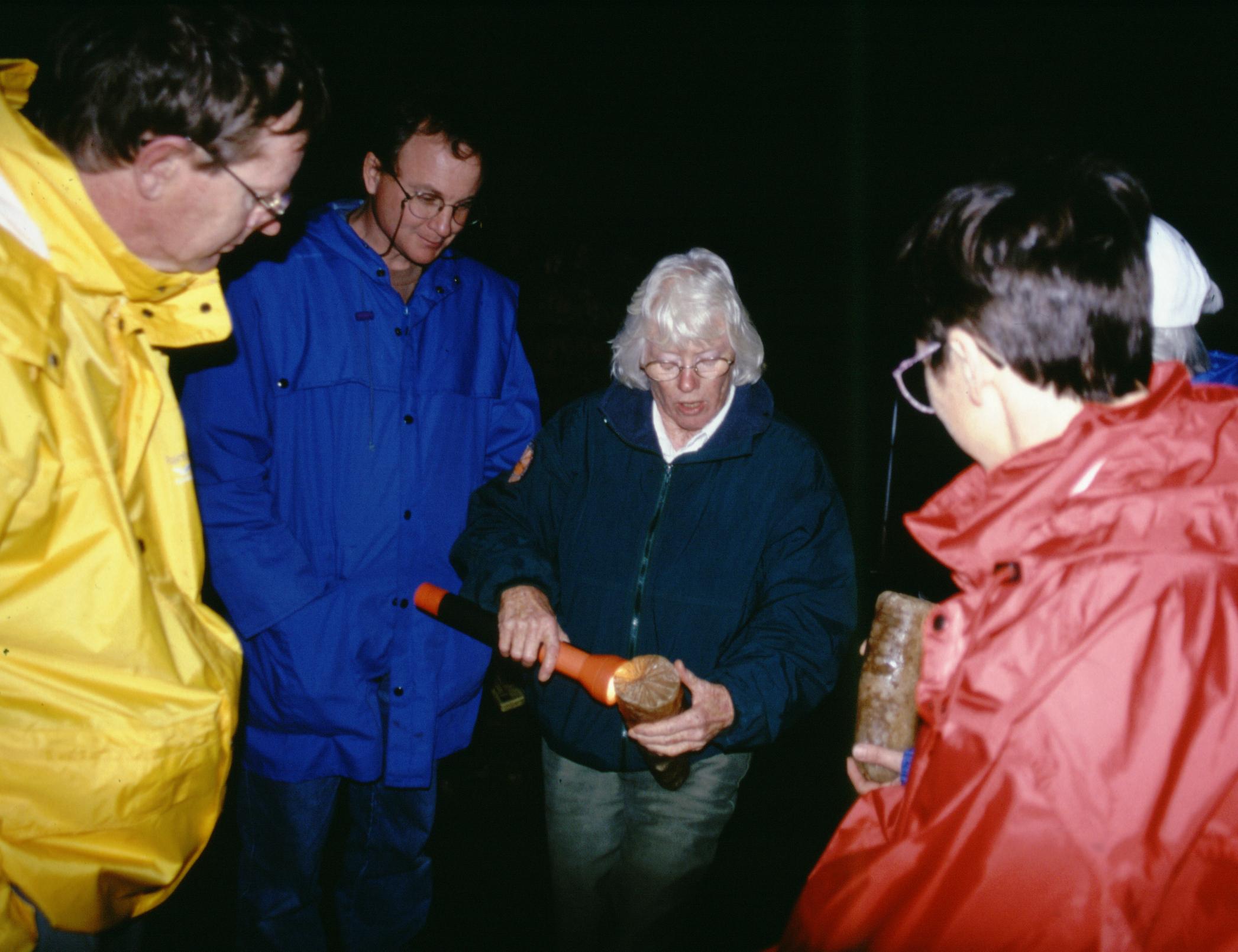 |
For many people, a cave tour is the only way they get to experience a cave. Here a trained guide is showing a group the growth rings in a speleothem
in Yarrangobilly caves, NSW Australia. (Image : Caroline Lewis) |
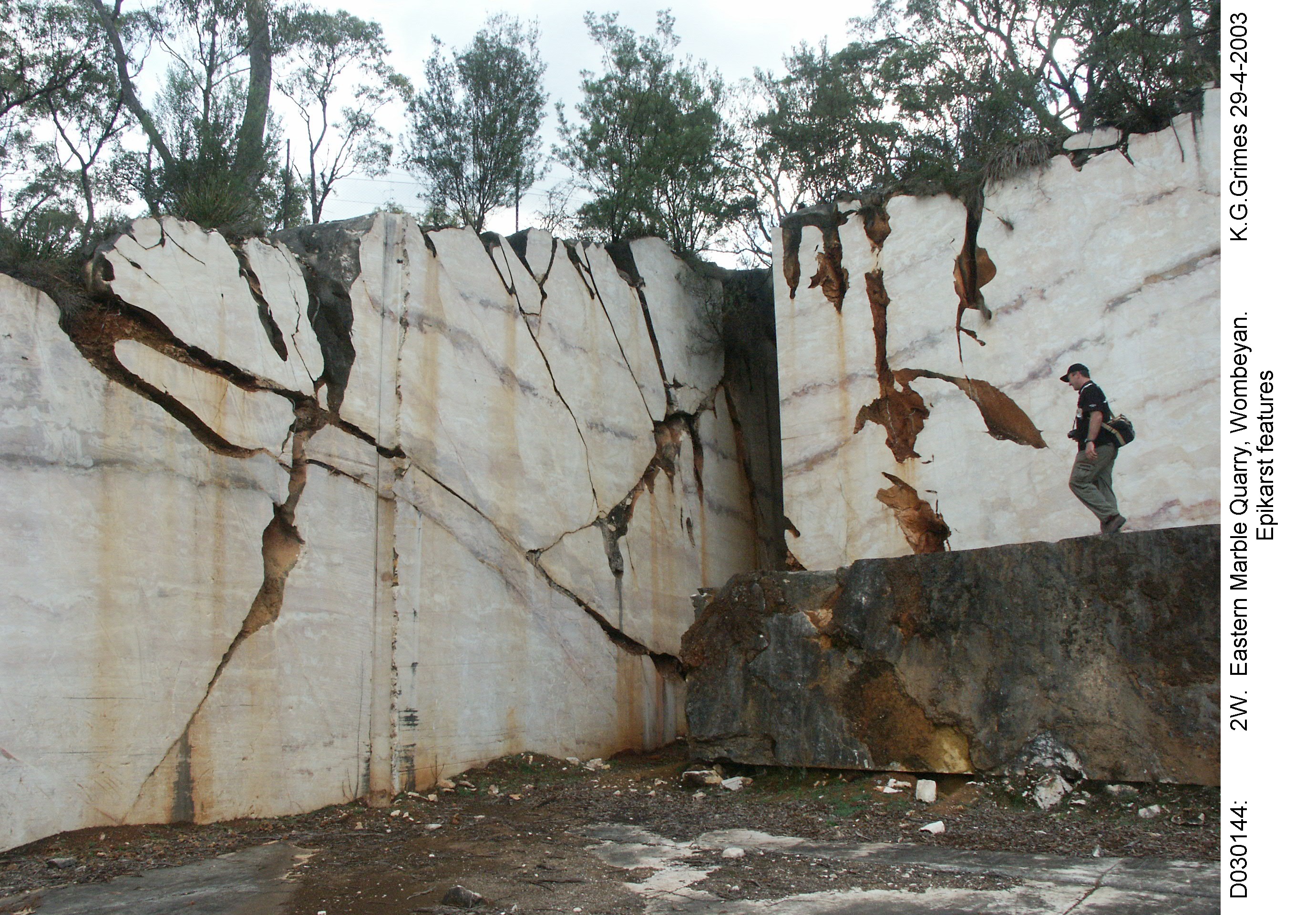 |
Small caves exposed in the walls of a marble quarry at Wombeyan, NSW, Australia. Because marble and limestone are used for building products and other
industrial purposes, many adjacent cave sites are protected and management practices put into play to ensure that mining operations don't interfere with
cave features or the unique cave environments.
(Image : Ken Grimes) |
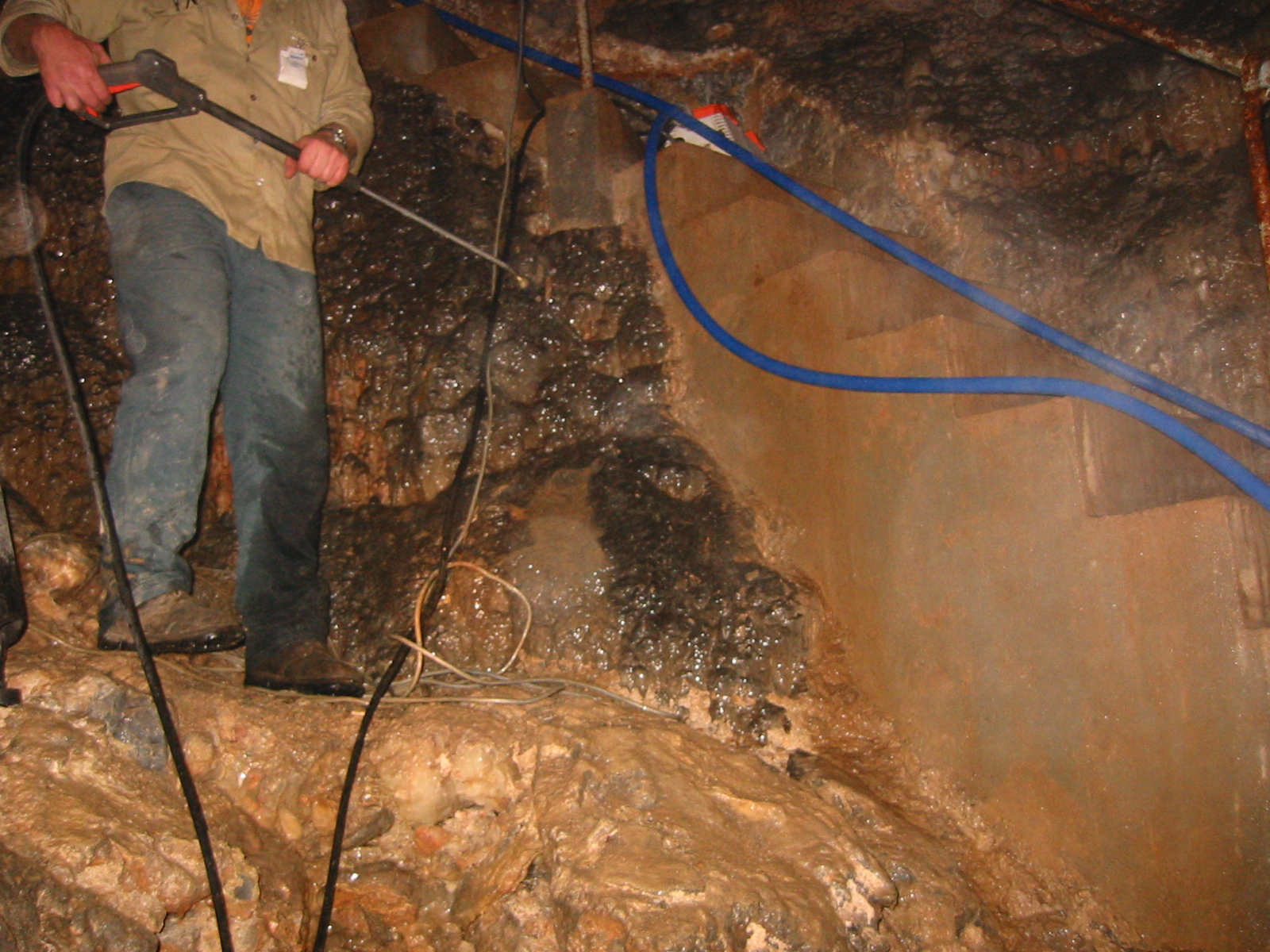 |
Cleaning the grime of cave formations left behind by years of tourism using high pressure water. Jersey Cave, Yarrangobilly, NSW Australia. (Image : Andy Spate) |
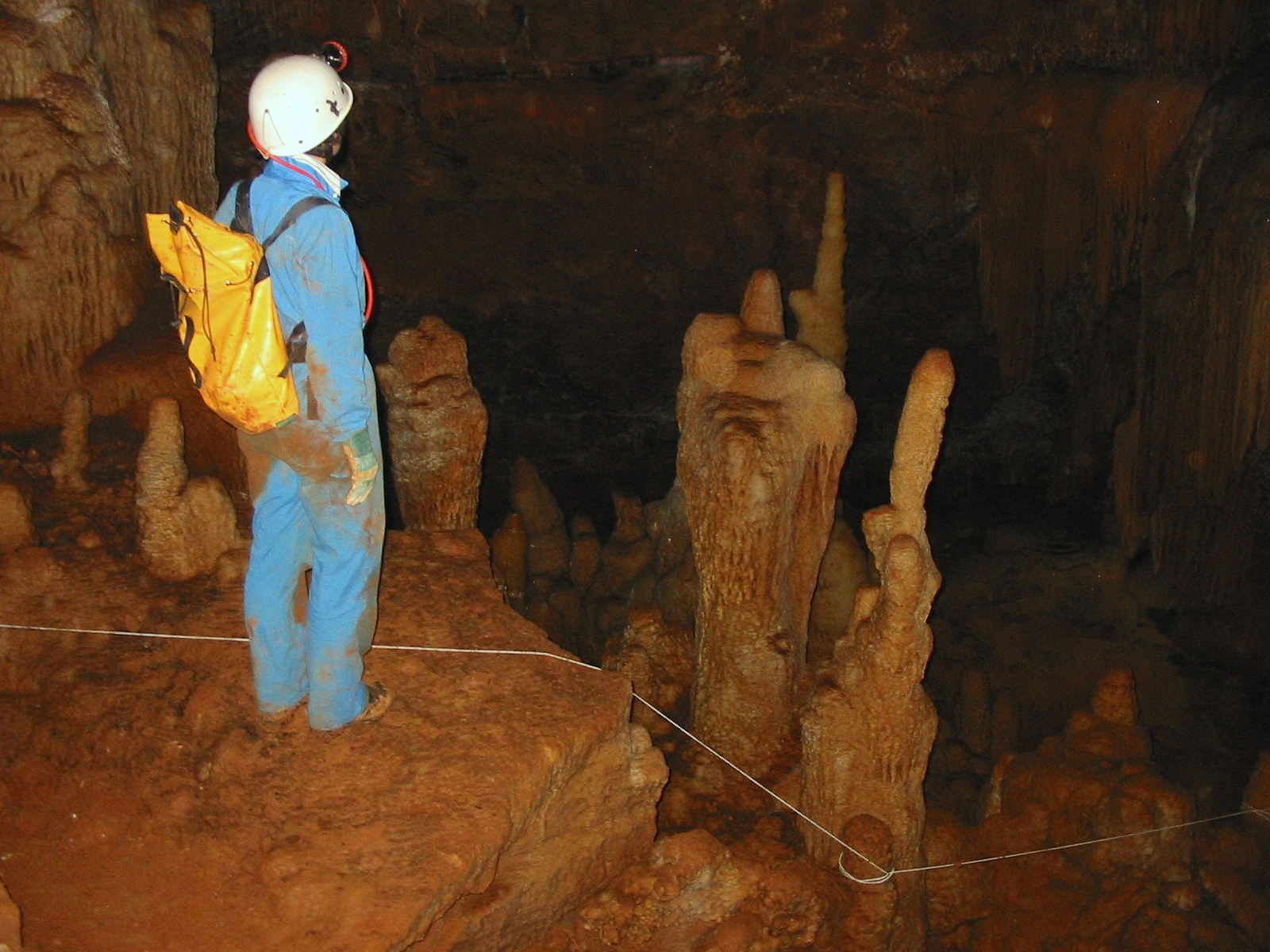 |
In a wild cave, a line of flagging tape is used to guide people on a path which will protect formations. (Image : Andy Spate) |
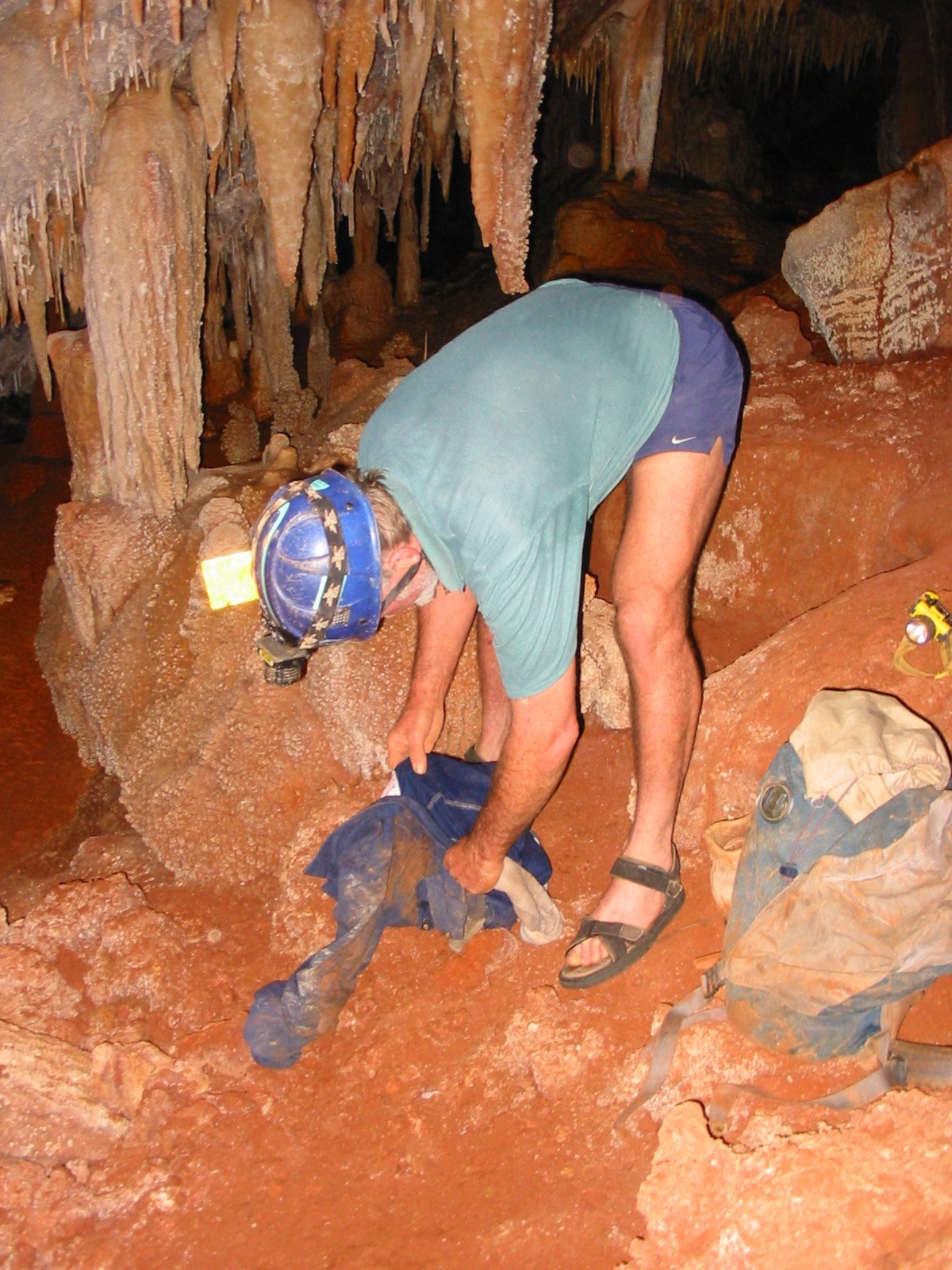 |
A caver removes dirty clothes before entering an unexplored section of a wild cave. (Image : John Brush) |
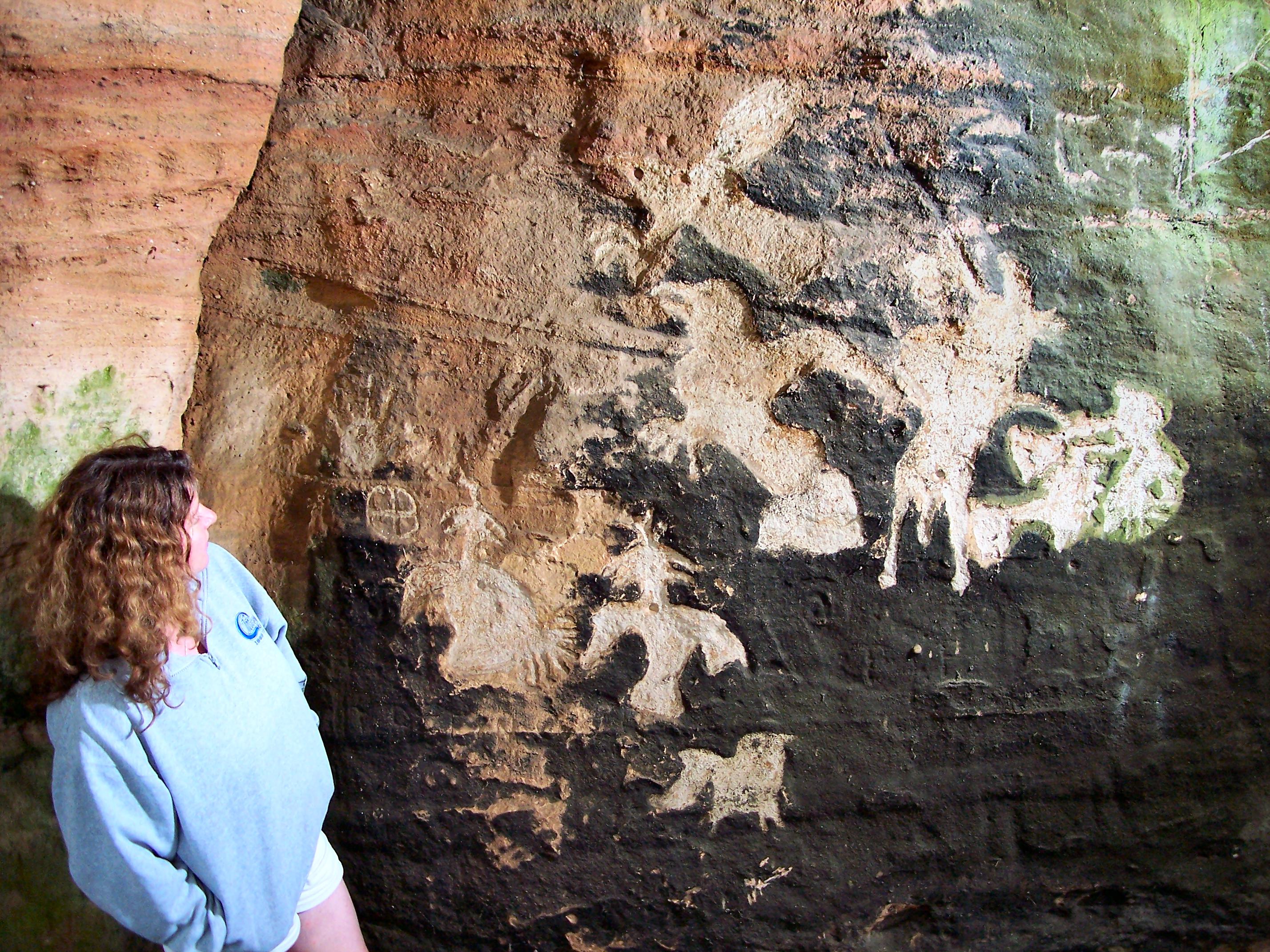 |
Management of human use of caves, such as this ancient rock art gallery, is also an important consideration. (Image : John Lovaas) |
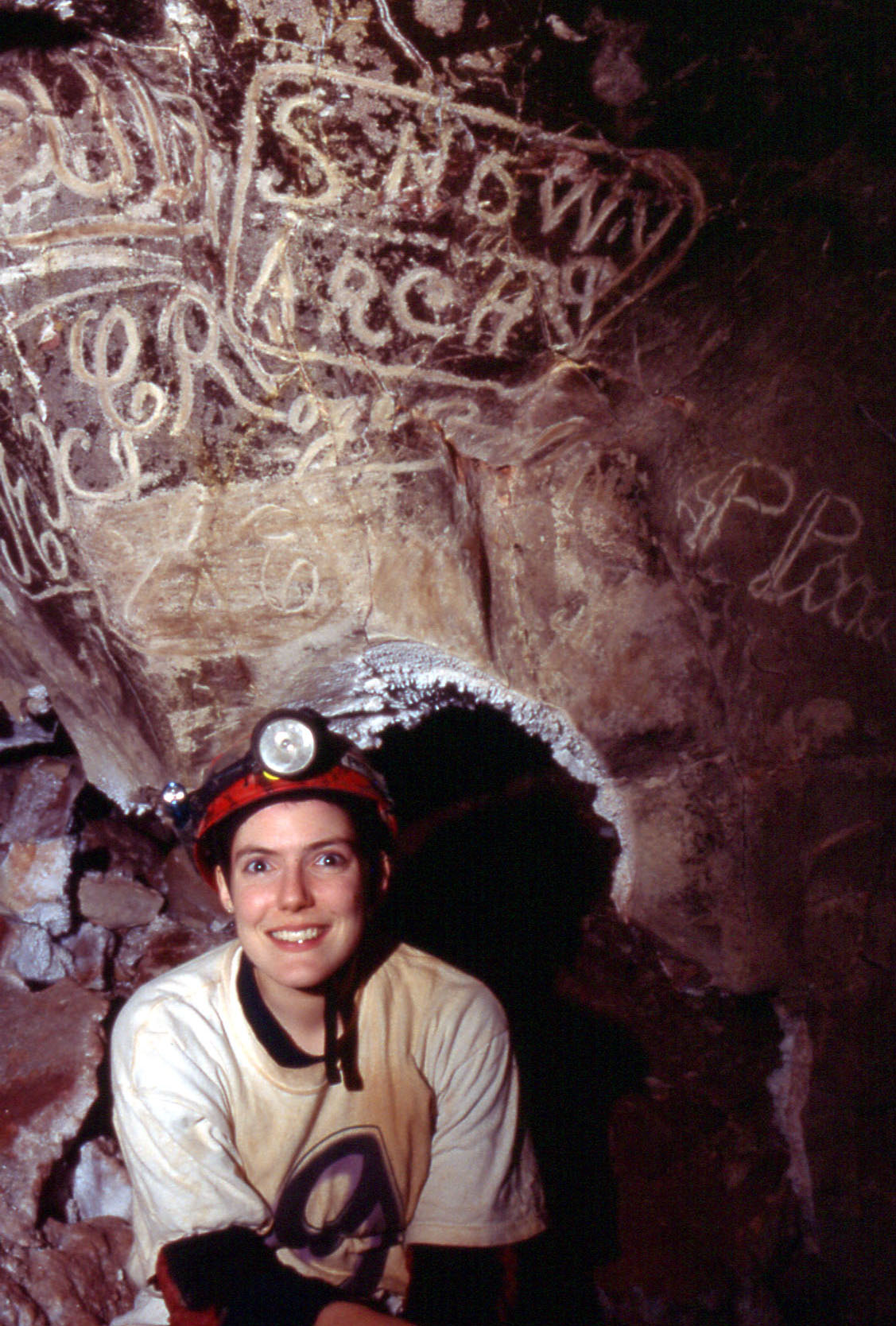 |
Graffiti left in the 1800's on the wall of Wind Cave, South Dakota, possibly by the famed cave explorer, Alvin McDonald. (Image : Carleton Bern) |
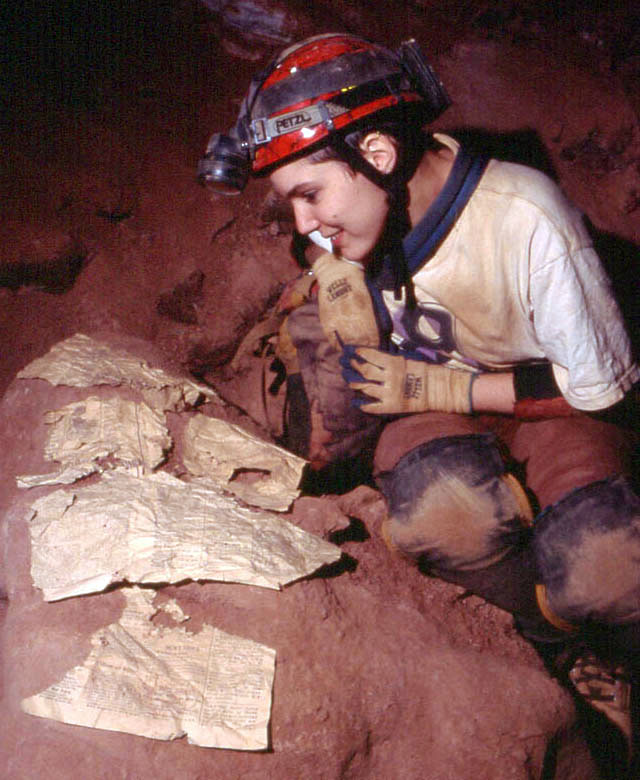 |
Caver Amy Bern examines fragments of newspaper in Wind Cave, South Dakota. The newspaper was used to peak up cave formations which were mined
and sold as souvenirs in the 1800's. (Image : Carleton Bern) |
|
|
|
|
|
|
|
|






